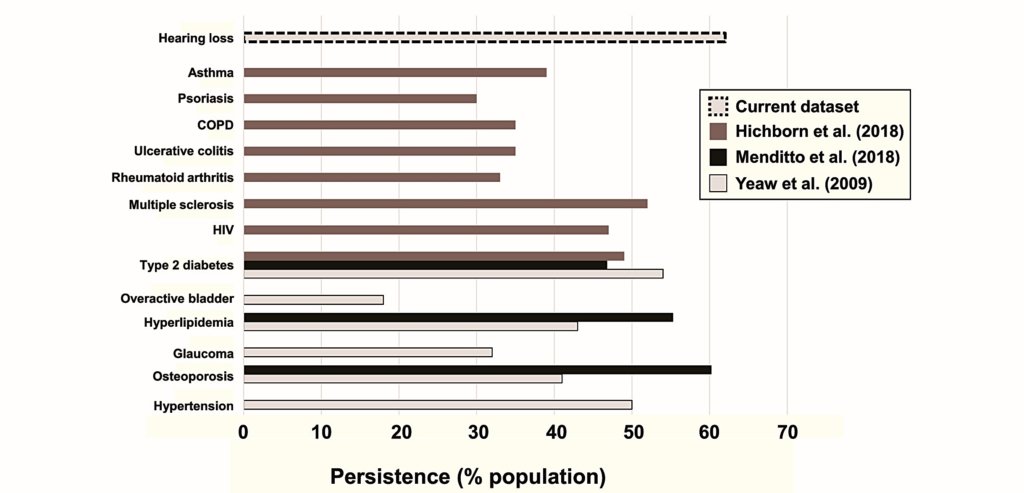Message from the Editor-in-Chief
In 2020, Saunders and her colleagues published a really neat report in Ear and Hearing, with a rather lengthy title “Electronic health records as a platform for audiological research: data validity, patient characteristics and hearing-aid use persistence among 731,213 US Veterans.”1 They were interested in developing a novel research technique by which the follow-up behaviours of patients could be tracked to make sure that prescribed medicines or devices were not gathering dust in the medicine cabinet or a dresser drawer- they called this “persistence.” This was followed up by the same group in 2021 with data specifically for hearing aid use. Following is a figure from page 8 of their 2020 publication showing that of all of the medicines and devices that were provided free of charge to veterans through the Veteran’s Affairs in the United States, hearing aid usage (based on a regular provision of batteries) was the highest of any of the pharmaceuticals and devices provided.

The continued use of hearing aids (based on the ongoing provision of batteries) was 63%. This was higher than medicines for HIV-AIDS, Type 2 diabetes, Multiple Sclerosis, COPD, Hypertension, and Glaucoma. In short, hearing aids were more important for these veterans than other quality of life pharmaceuticals.2
I am not a Pollyanna who only looks at the positive in all things. Well, actually, I am, but in this case, there is real data to support this positive outlook. “Hearing better” is now viewed as one of the most important quality-of-life attributes available to the public.
This improved acceptance is based on many factors: improved cosmetics, improved function in difficult listening environments, wireless features, integration of hearing aids with other devices such as telephone and TV usage. Improvement in the uptake of hearing aids is also in great part due to the professionalism of audiologists, their training, and clinical excellence.
We should be very proud of our chosen profession.
I hope you all survived the cold months of winter and all are healthy. I wish you all a pleasant (and warmer) spring season.
References
- Saunders GH, Dillard LK, Zobay O, et al. Electronic health records as a platform for audiological research: data validity, patient characteristics and hearing-aid use persistence among 731,213 US Veterans. Ear and Hearing 2020; doi:10.1097/AUD.0000000000000980
- Zobay O, Dillard LK, Naylor G, Saunders GH. A Measure of long-term hearing aid use persistence based on battery reordering data. Ear and Hearing September/October 2021;42(5):1441–1444 doi: 10.1097/AUD.0000000000001032

